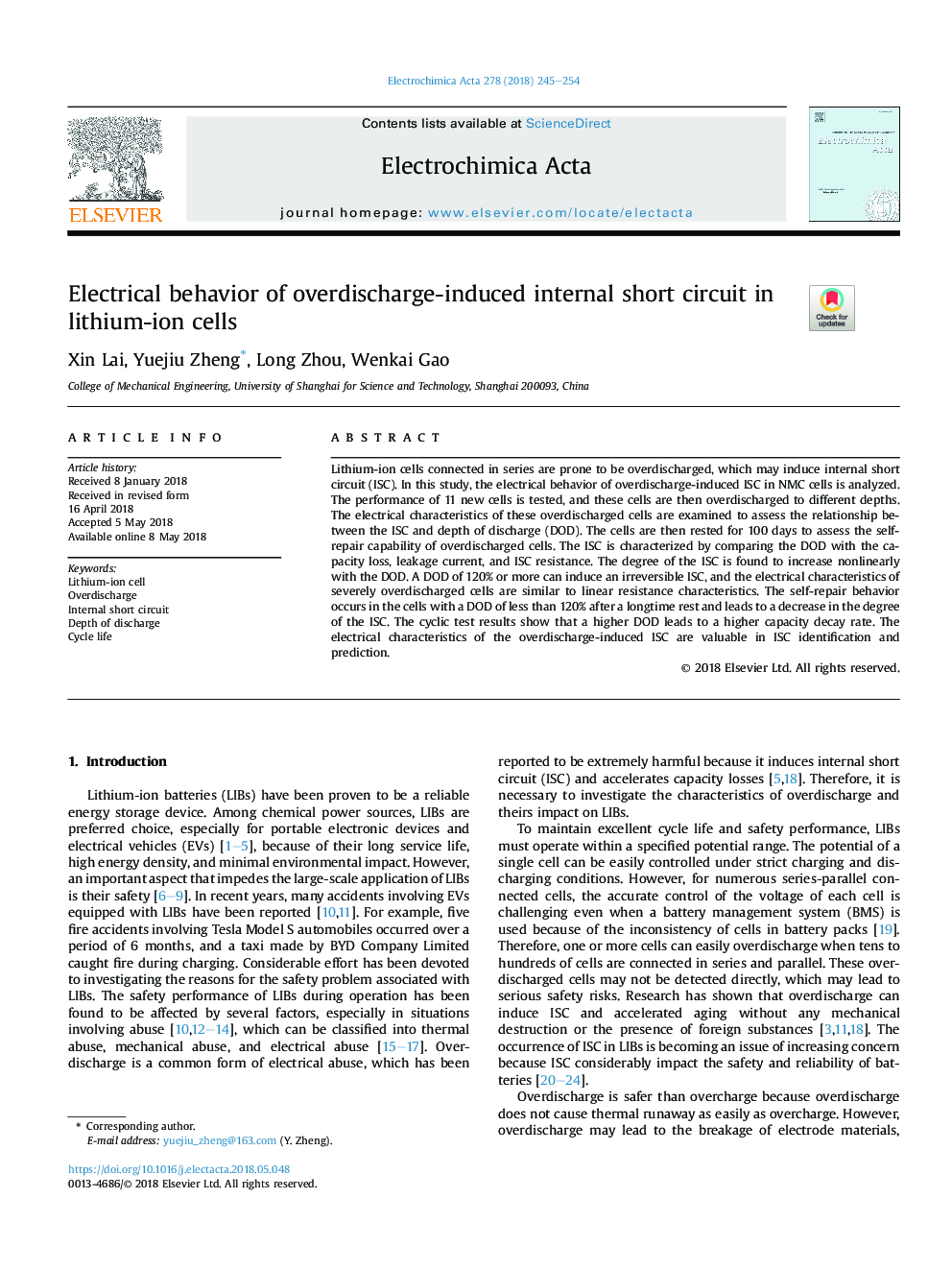| Article ID | Journal | Published Year | Pages | File Type |
|---|---|---|---|---|
| 6602687 | Electrochimica Acta | 2018 | 10 Pages |
Abstract
Lithium-ion cells connected in series are prone to be overdischarged, which may induce internal short circuit (ISC). In this study, the electrical behavior of overdischarge-induced ISC in NMC cells is analyzed. The performance of 11 new cells is tested, and these cells are then overdischarged to different depths. The electrical characteristics of these overdischarged cells are examined to assess the relationship between the ISC and depth of discharge (DOD). The cells are then rested for 100 days to assess the self-repair capability of overdischarged cells. The ISC is characterized by comparing the DOD with the capacity loss, leakage current, and ISC resistance. The degree of the ISC is found to increase nonlinearly with the DOD. A DOD of 120% or more can induce an irreversible ISC, and the electrical characteristics of severely overdischarged cells are similar to linear resistance characteristics. The self-repair behavior occurs in the cells with a DOD of less than 120% after a longtime rest and leads to a decrease in the degree of the ISC. The cyclic test results show that a higher DOD leads to a higher capacity decay rate. The electrical characteristics of the overdischarge-induced ISC are valuable in ISC identification and prediction.
Related Topics
Physical Sciences and Engineering
Chemical Engineering
Chemical Engineering (General)
Authors
Xin Lai, Yuejiu Zheng, Long Zhou, Wenkai Gao,
